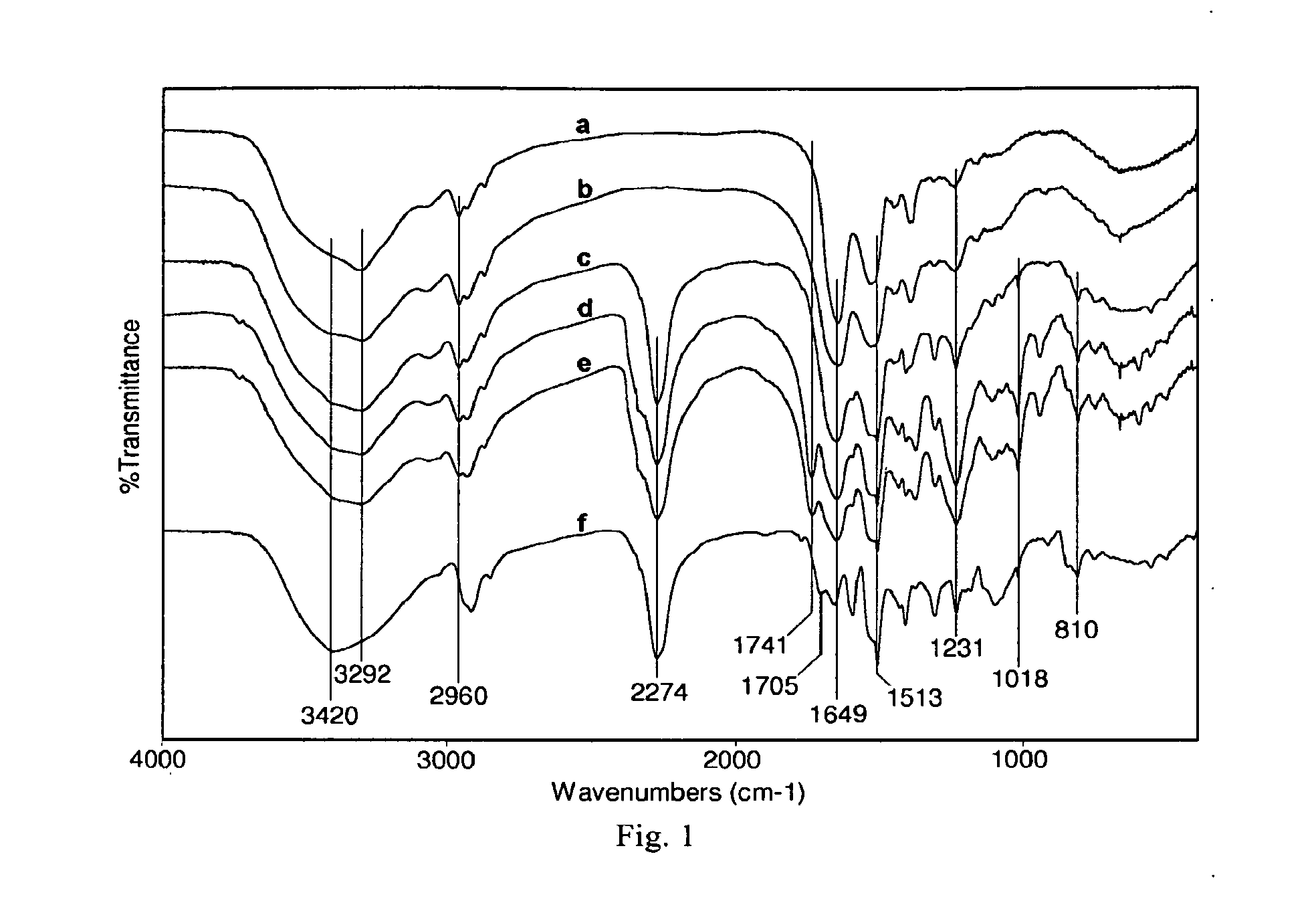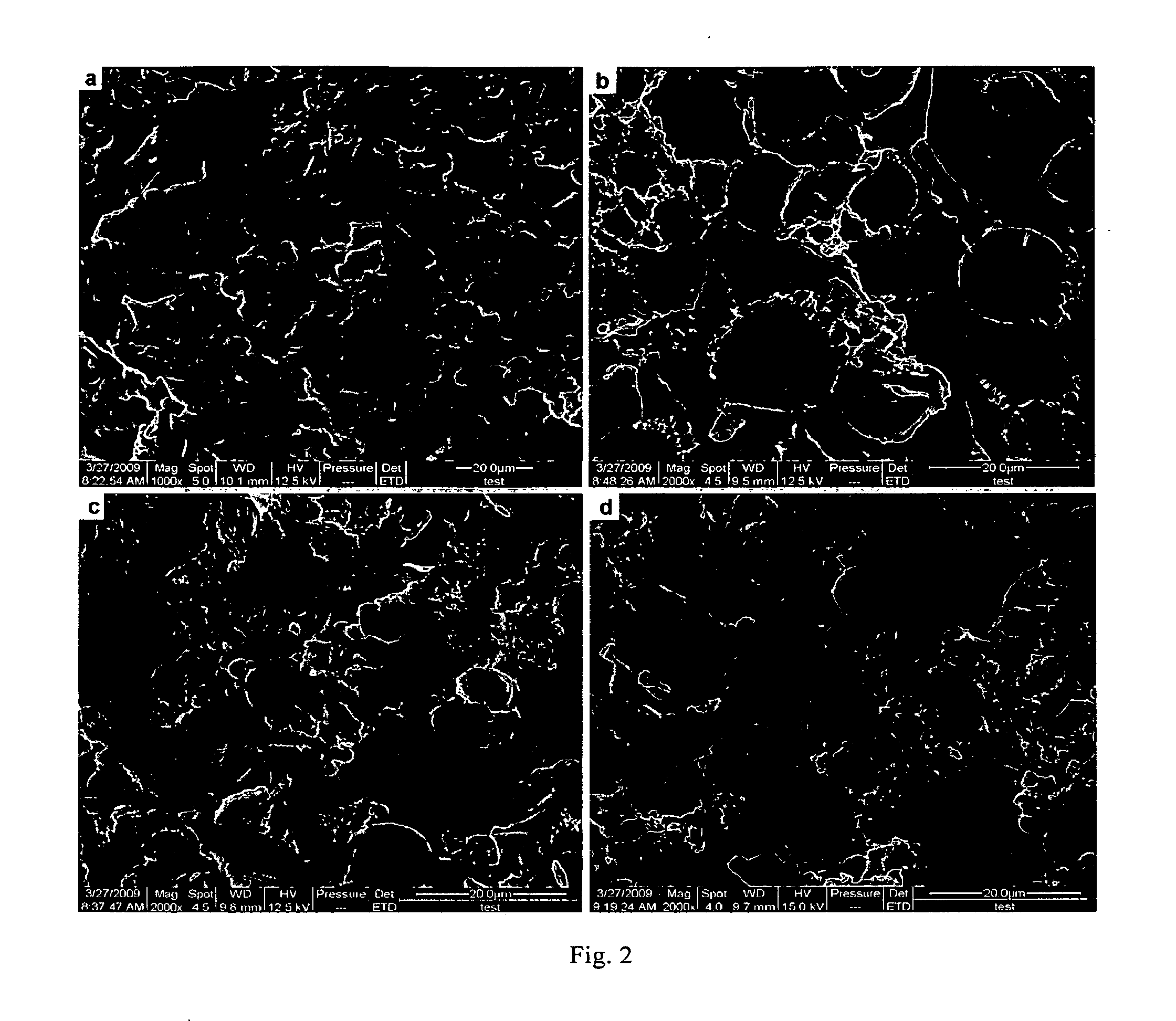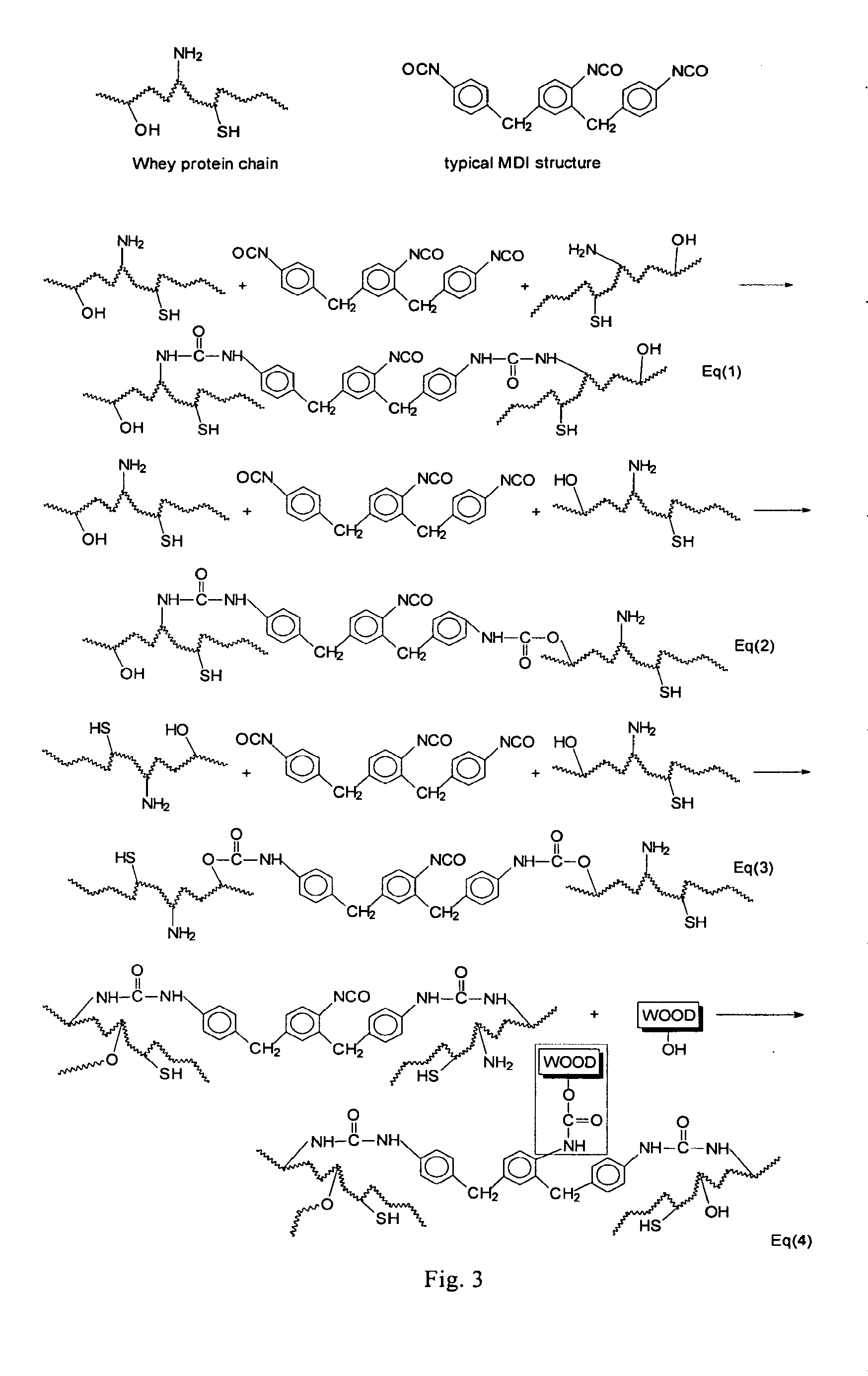Whey-protein based environmentally friendly wood adhesives and methods of producing and using the same
a wood adhesive and protein-based technology, applied in the field of wood and paper adhesives, can solve the problems of significant environmental problems, reduced availability and cost of non-renewable fossil resources, and the valuable fraction of cheese whey is still not fully utilized, and achieves good bonding strength, low cost, and water resistance. good
- Summary
- Abstract
- Description
- Claims
- Application Information
AI Technical Summary
Benefits of technology
Problems solved by technology
Method used
Image
Examples
case ii
gate the Effect of WPI / PVAc / MDI Blending Process
[0113]MDI is more reactive to WPI solution than PVAc emulsion for the gel time of PVAc / MDI mixture (more than 9 hours) is much more than that of WPI / MDI mixture (about 1.5 h). So, the effects of two WPI / PVAc / MDI blending processes were investigated as follows:
[0114]Common one: blending WPI solution with PVAc emulsion before blending with MDI.
[0115]New one: blending PVAc emulsion with MDI before blending with WPI solution.
Materials:
[0116]1) Denatured 40 wt % WPI solution: the 40% WPI solution was thermally denatured at 60-63° C. for 15 minutes.[0117]2) Commercial PVAc emulsion (Cascorez IB-S17, Hexion Specialty Chemicals)[0118]3) Polymeric methylene diphenyl diisocyanate (MDI, supplied by University of Maine)[0119]4) Formation: 30 parts PVAc emulsion, 70 parts 40 wt % WPI solution denatured at 60° C. for 15 min, and 15 parts of MDI
TABLE 3the WCSS28 h of wood bondline with various blending processWCSS28 hBlending processDetails(MPa)Commo...
example 1
Novel Whey-Protein Based Aqueous Polymer-Isocyanate (API) Adhesives for Glulam (Glued-Laminated Timber)
[0165]A novel API adhesive for Glulam was developed using whey protein a byproduct of cheese making. The whey-protein based API adhesives were characterized by bond test, Fourier Transform Infrared (FTIR) spectroscopy and Scanning Electron Microscope (SEM) for bond strength and durability, chemical structures and morphology. The optimized whey-protein based API adhesive had a 28 h boiling-dry-boiling wet strength 6.81 MPa and a dry strength 14.34 MPa according to the test procedures in JIS K6806-2003 standard. The addition of PVAc emulsion can prolong the work life of the novel API adhesive. Addition of crosslinker MDI can not only increase the cohesive strength of the cured adhesive by crosslinking whey protein and PVA, but contribute the strong chemical bonds via urethane linkage in wood bondline. Addition of PVA further increased the crosslinking density of the cured adhesive by...
example 2
Whey-Protein Based Environmentally Friendly Wood Adhesives
[0199]Purpose—To develop an environmentally safe aqueous polymer-isocyanate (API) wood adhesive for structural uses with whey protein isolate (WPI) that is a by-product of cheese making.
Design / methodology / approach—The API formulations with whey proteins denatured at different heating temperatures and times, WPI / PVA (polyvinyl alcohol) denaturing processes, PVA contents and nano-CaCO3 (as filler) contents were investigated and optimized according to the JIS K6806-2003 standard.
Findings—A whey-protein based API adhesive was developed which had 28 h-boiling-dry-boiling wet compression shear strength 6.81 MPa and dry compression shear strength 13.38 MPa beyond the required values (5.88 and 9.81 MPa, respectively) for structural use of commercial standards. The study also indicated that the thermal denaturation of 40% WPI solution at 60-63° C. could unfold the globular structure of whey protein to some extent and therefore improve...
PUM
| Property | Measurement | Unit |
|---|---|---|
| dry bond strength | aaaaa | aaaaa |
| dry bond strength | aaaaa | aaaaa |
| dry bond strength | aaaaa | aaaaa |
Abstract
Description
Claims
Application Information
 Login to View More
Login to View More - R&D
- Intellectual Property
- Life Sciences
- Materials
- Tech Scout
- Unparalleled Data Quality
- Higher Quality Content
- 60% Fewer Hallucinations
Browse by: Latest US Patents, China's latest patents, Technical Efficacy Thesaurus, Application Domain, Technology Topic, Popular Technical Reports.
© 2025 PatSnap. All rights reserved.Legal|Privacy policy|Modern Slavery Act Transparency Statement|Sitemap|About US| Contact US: help@patsnap.com



